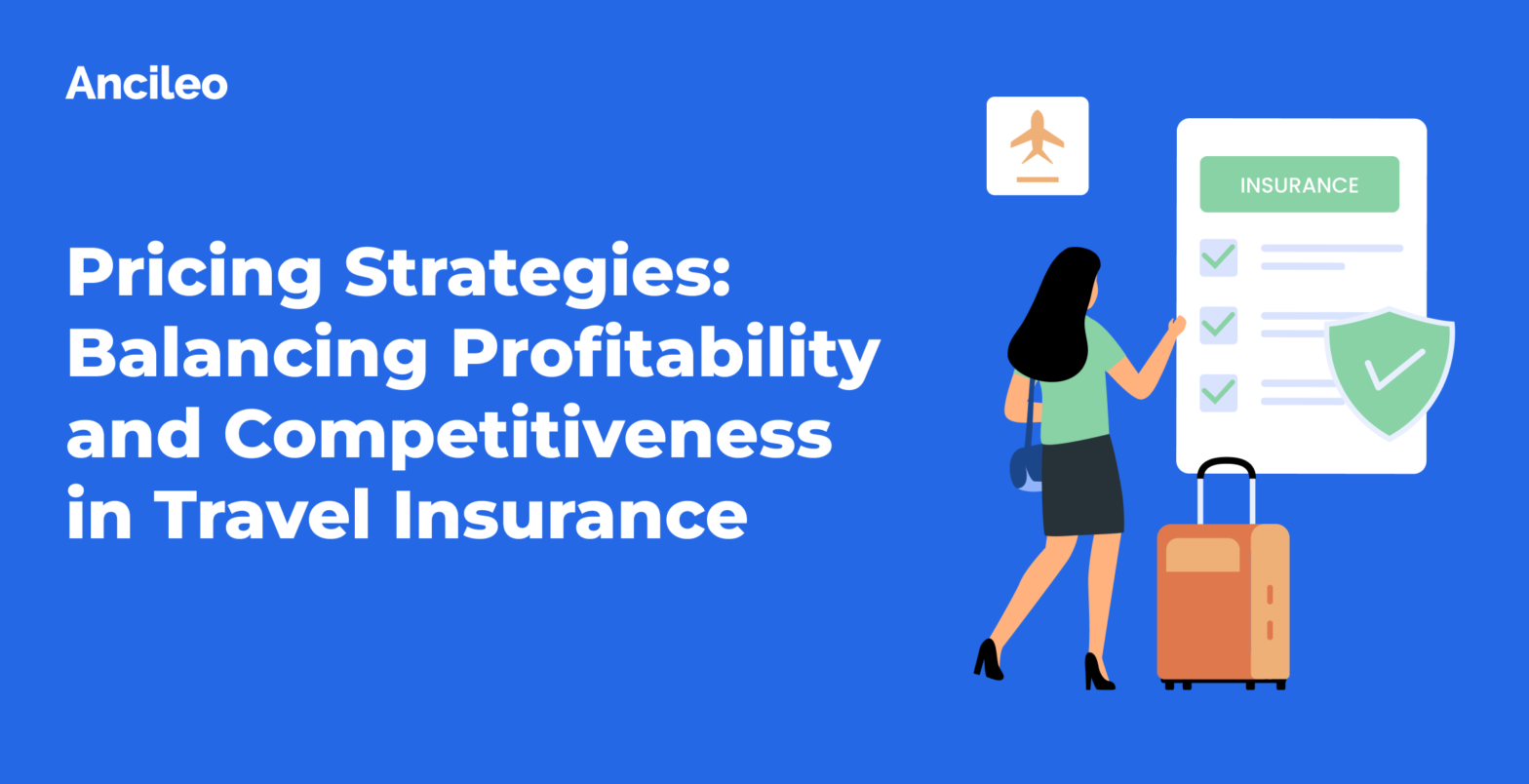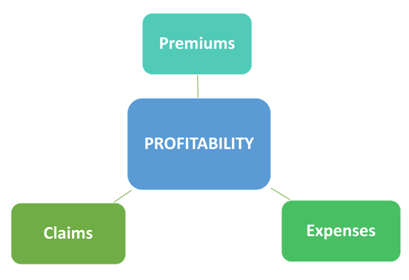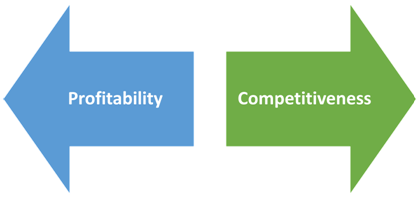
For travel insurers, finding the balance between profitability and competitiveness when it comes to pricing is an ever-present challenge. It’s like walking on a tightrope—you want to offer attractive prices for customers while also making sure that your company is making a profit. Though it’s a common practice to experiment on pricing, it may not be the ideal approach always especially for insurance products.
In this article, we’ll navigate how profitability and competitiveness go hand in hand in the travel insurance industry. We will also take a look at some of the most effective strategies for balancing these two factors.
Profitability and competitiveness are two intertwined factors that influence the success and sustainability of travel insurance companies. In the same way as other businesses, travel insurers aim to achieve profitability in order to ensure financial stability and continue meeting their obligations to policyholders. Competitiveness, on the other hand, refers to a company’s capability to effectively position its products in the market to attract customers and gain an advantage over its competitors.
Keeping profitability and competitiveness in balance is crucial, as overemphasizing one can undermine the other. While it’s tempting to put up a high price on a product no matter how comprehensive it is, it could price out potential customers due to excessive premiums, resulting in a reduced market share and limited growth opportunities. Conversely, when aiming for overly-competitive pricing, it’s true that it might attract more potential customers, but it could lead to inadequate revenue to cover operational expenses, threatening the insurer’s financial viability.
The first step to balancing profitability and competitiveness of a travel insurer is to assess its profitability. And the way to do so is to closely examine the standing of its three components:

Travel insurers can start at the basic component, which is the lifeblood of an insurance company—premiums. A lot of insights about the profitability of an insurer can be derived just by assessing its current premium rate.
If premiums are set too high, customers may seek alternative options, resulting in reduced market share. If it’s too low, it can certainly attract customers, but it may lead to inadequate funds to cover future claims and operating expenses, which might transpire into eroding profitability in the long run. Maintaining a balance between a competitive premium rate and adequate coverage is essential for attracting customers while ensuring financial stability.
Claims management is another crucial component that travel insurers must look into. When policyholders file claims, insurers must process them accurately and efficiently. Effective claims handling not only enhances customer satisfaction but also prevents fraudulent or inflated claims, thereby safeguarding the insurer’s financial resources.
Over time, travel insurers incur various operational costs, such as marketing, underwriting and customer service. Obviously, these expenses are inevitable to any insurance business, and they certainly have a direct impact on a company’s profitability and survivability. By looking at these factors, travel insurers can ascertain their current financial standpoint.
Implementing cost-effective practices and optimizing business operations can significantly help reduce expenses, bolstering insurer’s profitability.

With so many variables that need to be considered, how can insurers strike the balance between profitability and competitiveness to survive in the hypercompetitive landscape of travel insurance? Well, it’s about effectively using these variables to improve the way they position themselves in the market.
Here are some of the best practices that travel insurers can employ to calibrate their pricing in a way that is both profitable and competitive.
It’s important to incorporate both profitability and competitiveness in the pricing objectives for travel insurance products. This will have a lasting effect on your company’s vision and standing in the long run. When developing pricing objectives, make sure to always consider several factors such as market share targets, desired profit margins, and competitive positioning.
If you’re aiming to capture a significant share of a specific customer segment, obviously, you may lean your pricing slightly towards competitiveness. On the other hand, if your goal is to cater to a niche market with premium offerings, you can shift your focus towards profitability. But remember, while leaning toward one end of the spectrum can yield short-term gains, a holistic approach that harmonizes profitability and competitiveness ensures long-term success.
Understanding your target markets based on their demographics, behaviors, and needs allows you to fine-tune your pricing plans accordingly. Analyzing their preferences and pain points can give you valuable insights as to what you need to refine in your current pricing strategy. For example, if you found out that certain customer segments value comprehensive coverage over pricing, you can then adjust your pricing to cater to this demand.
As might be expected, the best way to do this is to initiate your own market research, or to gain access to the latest and studies about consumers’ travel insurance needs.
Direct engagement with your customers gives you the opportunity to gain insights into their willingness to pay and how they actually perceive the value of your insurance products. With these insights, you can effectively craft an effective pricing plan that stands just between profitability and competitiveness.
Most of the time, value-based pricing works best when aiming for a balance between profitability and competitiveness. This strategy has been used in many industries for quite some time, including the travel insurance sector.
To implement this strategy, travel insurers must first gain a deeper understanding of their customers’ needs and they must clearly define how their products can fulfill those needs. The next step is to find ways on how to effectively communicate the specific benefits of their products to justify the cost and improve the perceived value.
The hypercompetitive nature of the travel insurance market demands constant monitoring and adjustment in pricing strategies. Make sure you stay updated on emerging trends and competitor movements so you can adjust your pricing accordingly. This includes recalibrating your premium rates, tweaking coverage options or adding new plans in response to new customer needs.
Communication is an essential element not just for creating trust between you and your customers, but also for keeping profitability and competitiveness in balance. Explain the rationale behind your pricing plans to establish a foundation of trust, which, in turn, may result in a boost in your competitive edge. Customers are more likely to choose travel insurers who demonstrate a commitment to fair and transparent practices.
Establishing a transparent communication ensures that while seeking financial viability, you remain attuned to customer expectations, creating a win-win situation that fortifies your position in the market.
Achieving the balance between profitability and competitiveness emerges as a fundamental challenge within the landscape of travel insurance. We’ve shown you how these two factors are linked together, showcasing how they are intricately intertwined. By understanding the underlying components of profitability, and implementing some effective pricing strategies, you can find the right equilibrium between these key factors.